Dreams in a Sliver of Time: Plains Songs
Small Things Recollected
By William Ramp
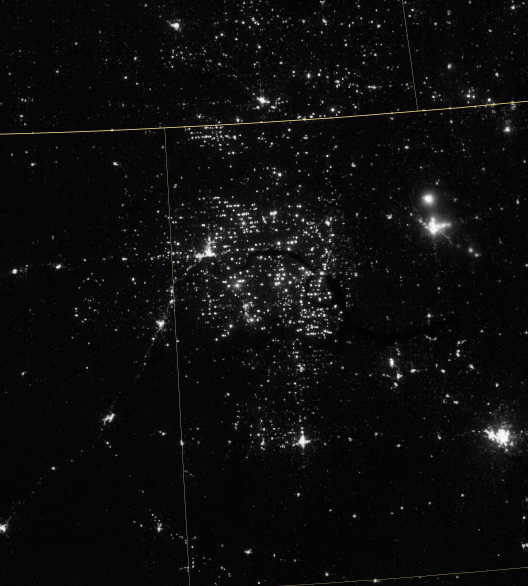
“These developments are driven by dreams—of energy independence, economic recovery, political advantage, and profit. They coexist or clash with other dreams, some of which are born of recent concerns: food security, sustainable agriculture, re-wilding. Others revive far older matters: reassertion of Native sovereignty, a literal and figurative return of the buffalo, land claims. Ancient or modern, such dreams are haunted by figures and voices which make ghostly and sometimes distorted visitations to contemporary minds. They also play about physical traces remaining in archives and archaeological sites, town plans and fence lines, crumbling bridges and buildings, abandoned roads and rail beds . . . and stone circles, petroglyphs, and mounds.”—By William Ramp
LETHBRIDGE Alberta, Canada—(Weekly Hubris)—7/28/2014—In my last column, I wrote about the population crisis of North American grassland birds, and how it might affect and be affected by our awareness of our environment. The issue seemed to creep up by stealth, but it is a crisis which derives from the past few hundred years of modernity.
This is a long time in terms of our individual lives, but it is the tiniest sliver of the natural and even human history of the North American plains. In this blink of an eye, grassland birds and their habitats have come under threat from several converging factors, including climate change, agricultural practices, and resource development. Exploitation of the massive Bakken oil shale formations underlying North Dakota, Montana, and the Canadian provinces of Saskatchewan and Manitoba is raising concerns about water usage, light and noise pollution, oil and chemical spills, and habitat fragmentation by access roads and well pads.
Jim Fuglie, a former North Dakota tourism director, describes Theodore Roosevelt National Park, from which dozens of natural gas flares are now visible at night, as “an island in the sea of development” (Becca Clemons, “North Dakota oil boom brings worry to Theodore Roosevelt National Park,” Los Angeles Times, November 2, 2013).
Resource development on the plains and in the inter-mountain West fuels more than vehicles: it drives national politics in both Washington and Ottawa. The proposed Keystone pipeline bisects politics as it would the plains, though another, less direct route to the Gulf Coast already exists. At the far western shore of the grassy sea, a Federal-rights versus local-rights flap over protection of the sage grouse may threaten the Democratic majority in the US Senate (“Senate Majority Could Rest on the Sage Grouse,” Boston Herald, July 11, 2014.
The hydraulic fracturing (“fracking”) of oil and gas-bearing rock is accompanied by fracturing of local communities over economic costs and benefits, contamination and social disruption. Conversely, landowners, lawyers and environmentalists form alliances in ways that might not have been considered possible a couple of decades ago.

These developments are driven by dreams—of energy independence, economic recovery, political advantage, and profit. They coexist or clash with other dreams, some of which are born of recent concerns: food security, sustainable agriculture, re-wilding. Others revive far older matters: reassertion of Native sovereignty, a literal and figurative return of the buffalo, land claims. Ancient or modern, such dreams are haunted by figures and voices which make ghostly and sometimes distorted visitations to contemporary minds. They also play about physical traces remaining in archives and archaeological sites, town plans and fence lines, crumbling bridges and buildings, abandoned roads and rail beds . . . and stone circles, petroglyphs, and mounds.
In this and my next few columns, I want to pursue some of these ghosts. This will involve a bit of historical recovery, but I will circle back to our conflicted and apprehensive present, to ask about the future, not only of the plains, but of the human civilizations that inhabit, govern, exploit, and love them. This wandering will be neither systematic nor comprehensive but, instead, figurative and personal. It will journey through a region of grass and sagebrush, occasional forest, animals and people, and also a region of the mind—a moral and in places a sacred geography.
My touchstones will be the particular regions in which I live and write, and those in which I was formed. These are, respectively, the far northeastern and northwestern edges of what geographers call the Interior Plains Physiographic Division. Within it, the Great Plains proper begin west of the Mississippi and the northern Canadian Shield, suffering intrusions from the Quachita Mountains and the Ozark Plateau to the south. On his journey, your writer will not always know what he is looking at, but he will be compelled to tell of it anyway; to say how he sees and does not see.
The history of European and African-American settlement in this region runs to a very few centuries, during which the economic mainstay of the plains in agriculture and ranching was established. Today, agricultural usage of former grasslands, driven by upward-trending commodity prices, has been named as a wildlife and ecosystem survival issue along with resource extraction and water diversion.
But, in certain areas, both agriculture and ranching themselves are becoming something like a threatened species: spikes in commodity prices don’t necessarily translate into higher or even consistent profit margins for primary producers over the longer term, and they don’t offset other besetting demons such as aquifer depletion, drought, floods, hail, salinity, and agricultural-policy politics.
We don’t simply try to make sense of these issues in the here and now. Despite laments about waning historical awareness in a social-media age, cross-generational fragments of collective memory, shared notions and contagious assumptions persist even as physical traces of the past are defaced, bulldozed or turned into kitsch.
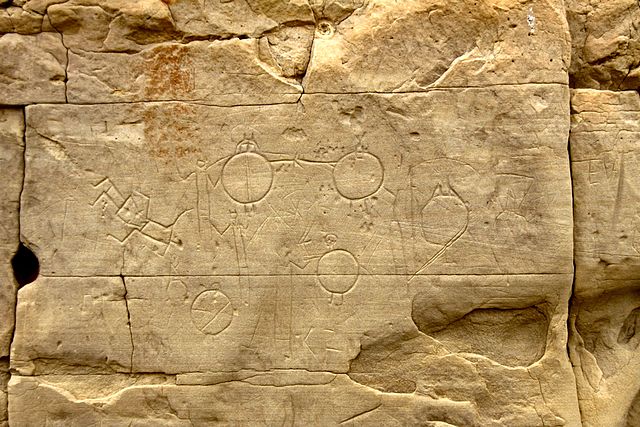
For the three centuries since the Spanish entered them, the plains have been both actuality and dreamscape to incomers, haunting their literatures, political imaginations, religions, and economic aspirations. On them, we have mapped our enthusiasms and hopes, and now (or once again), our fears.
But the plains have been imagined, spoken and sung for far, far longer than that, by many different nations, with different histories, languages, cultures, and economic practices. Arriving Europeans too often did not attend to them or their voices, and instead spoke at or of them.
The first inhabitants of the plains presented incomers with a naming problem that persists today. They are commonly referred to in Canada as First Nations and in the US as Native Americans, but several other terms remain in widespread use. Even the old misnomer, “Indian,” has been subversively re-purposed by some as a contemporary identity claim. A problem with all such names is not only that they were applied by Europeans but that they are easy to use clumsily—I have done so—and that they generalize. They gloss over the particular existence and persistence of many diverse peoples of long standing, and the birth of a new one.
Over the past four centuries, the Métis, descendants of French or Scots traders and indigenous people of many nations, have formed a distinctive society, identity and culture of their own, especially on the plains of Manitoba and Saskatchewan.
The first peoples of the plains have also been affected by careless applications of the label “nomadic” in ways that justified disparagement and neglect by “civilizing” agencies. In actuality, on the eastern edge of the interior highlands, during a time parallel to the European middle ages, some ten to 20 thousand people inhabited a city of six square miles. In it, they built a standing circle of wooden poles, along with an enormous earthwork a hundred feet high with a footprint as large as the Great Pyramid at Giza, surmounted by a 33-yard-long building (Cahokia Mounds State Historic Site, “About Cahokia Mounds”). The “nomadic” moniker oversimplified the diversity of the plains peoples but, even in the case of those who traveled with the buffalo, it obscured their keen sense of territory, the complexity of their political, social and domestic arrangements, and the diversity and skill of their sustenance practices.

Much has been made of how military defeat, the loss of the buffalo, federal government tutelage, the outlawing of traditional practices, boarding schools, the reservation system, joblessness, and alcohol “destroyed” aboriginal cultures. But however severely they have been damaged; however many of their bearers have wandered and become lost, cultures can be surprisingly resilient. The thinnest wick can reignite a flame.
Recent efforts at cultural recovery build on deceptively slender links; quiet acts of preservation and transmission across generations, and a faith in prophecies. Moreover, gaps that outsiders might think they see may relate to something more deliberate; a knowledge of what things should not, even must not, be shared with outsiders (and this can at times be for the outsiders’ own good).
Cultures live through change. Ten millennia of continuity include ten thousand years of active adaptation. The Blackfoot word for “horse,” an animal they first encountered in the early 18th century, is ponokáómitaa, which compounds the terms for elk and dog, naming an unfamiliar being, by analogy, to others long known. Horses are now inseparably wedded to the Blackfoot people. In the past 300 years, adaptation has been a wrenching and painful process (with the added pain of outsider rebukes, based on a static and idealized notion of tradition, that such adaptations are “inauthentic”). But the so-called “defeat” of the plains peoples was—and is—provisional, partial, and potentially redeemable.
What can be said generally about the characteristics of these peoples?
What matters most is what they say about themselves, and about their relation to the newer arrivals now present among them. I write this column on Blackfoot land. At my university, formal events begin with an acknowledgment of that fact, even if it is one still unrecognized in title deeds. Some hear it as a mere formula but, for my Blackfoot colleagues, it is a courtesy which recognizes both a past and a present reality, connected over a vast span of time, evidenced by archaeology and DNA analysis (“Clovis Child’s DNA Links Native Americans to Early Ancestors,” Archaeology, February 12, 2014).
The first volume of the Historical Atlas of Canada, (Toronto: University of Toronto Press, 1987) details the cultural continuity between peoples represented in the archaeological record and those living today. An example is an Alberta stone circle constructed in stages over five thousand years, from 3,200 BC to the historic period of European contact (Plate 15). Ancient sites such as these are known and used by the Blackfoot today as a matter of course, nourished by an ongoing ten-thousand-year-old stream of stories, pictographic and other records, and ceremonies.
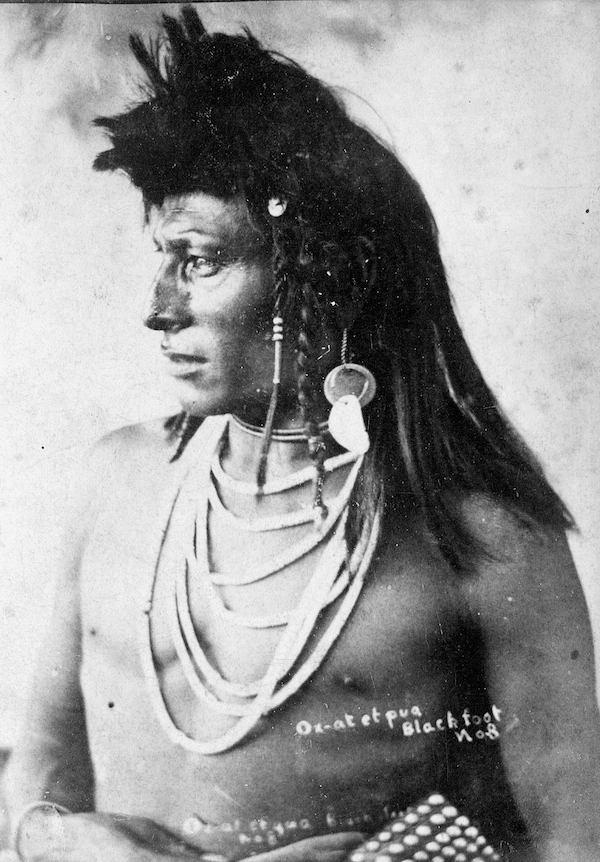
The first peoples of the plains not only maintained a strong sense of territory; they knew how to define, respect and test it. They had long traditions of diplomacy, and accepted ways of skirmishing and waging war, to attest to that fact. But their sense of political terms such as “territory”—and of others such as “nation” or “sovereignty”—are not always linguistically and conceptually identical to those of Europeans. (Today, legal scholars from several first nations are engaged in an epic task of comparison and translation—and debunking—in an effort to reassert their own legal traditions.)
They constructed a variety of buildings and dwellings besides the deceptively familiar tipi. (Tipis can appear deceptively simple, too, but they are not. Different cultures decorated and constructed them in different ways. Learning that construction takes careful and meticulous attention if one is not to look a fool to knowing eyes.)
They also inscribed their histories in stone, and built both earthen and stone monuments. Stone circles still surviving on the central and western plains vary in size from modest tipi rings to vast but precisely aligned constructions a hundred feet across. One of these, in Alberta, has been claimed—somewhat controversially—to be part of a complex miles in diameter.
Even on the high plains, the first nations combined hunting and gathering with other forms of sustenance that resisted easy demarcations between agriculture and pastoralism. Again, did so over a vast reach of time, long before those who applied the definitions showed up. They knew, conserved and tended hundreds of plant species. Their relations with the buffalo involved sophisticated management of undomesticated animals and involved skills rivaling or surpassing those of pastoral herding. They supplemented the fruits of their labors with regular trade that dispatched objects and messages over amazing distances.
In short, their lives challenged European definitions of “civilization,” though Europeans were all too often unaware of the extent of that challenge.
This adaptability continued in the tiny sliver of time after the disappearance of the buffalo, and despite the visitation of plagues such as smallpox and federal governments. The latter was the most effective hindrance, if ultimately an imperfect one. Despite prejudicial opinions to the effect that “nomadic tribes” would not take to agriculture, members of the Blackfoot Confederacy did so with some success, despite the imposition on them of a “peasant” farming model that restricted their access to modern tools and machinery. In Saskatchewan, the reserve lands allocated to the Kahkewistahaw Nation attracted attention by those who sensed potential competition or a chance to acquire real estate. They were obliged by a federal government which set in train a massive reserve lands surrender in 1907 (Indian Claims Commission, “Inquiry into the 1907 Reserve Land Surrender Claim of the Kahkewistahaw First Nation, 1997).
A residential school system, funded and regulated by the Canadian government and run by churches, was made mandatory for children living on reserves. It was intended to be a “civilizing” machinery to teach basic literacy and skills, on the premise that the educative influence of parents and community was baneful. Thus were generations of children exposed to rare kindnesses, much misunderstanding, and endemic disciplinary violence, suppression of ancestral languages, sexual abuse, neglect, and even unethical experimentation.
Life on Canadian reserves became a humiliating round of bureaucratic restriction, including an infamous “pass” system. During the German occupation of Holland in World War II, my Dutch father had to carry with him at all times a persoonsbewijs; a small card with his identifying information and a photo, to be shown to any agent of the occupying authorities at any time upon request. He took a small revenge after Liberation by drawing spectacles and a mustache on the photo.
Occupying authorities in Canada required “status Indians” to carry with them paper permission for each trip off-reserve, stating purpose, destination, duration and whether carrying a (hunting) firearm was permitted. Liberation from this system had to wait until the later 1940s. Permanent escape from the reserve meant accepting disenfranchisement—loss of official Indian status, loss of treaty rights, and often, exposure to an unsympathetic urban wilderness.
Through all these humiliations and deprivations, how have first peoples dreamed their lands? Differently from settler cultures, for sure.
Above, I used the terms “dreams” and “actuality” in ways that only weakly challenged their typically rationalist and European opposition. For those who inhabit the long continuities of Native history, dreams are actual; if anything, more actual than what the children of the Enlightenment called reality.
They are not mere brain functions, nor fragments of daytime experience distorted and replayed. Nor are they just artifacts of wakeful imagination or speculation. Both settlers and first peoples inhabited landscapes that were dreamscapes, and both acted on their dreams. But where settlers and investors projected their visions outward on to the land, in tune with cultural innovations a couple of centuries old, those they displaced attended carefully to dreams which were not simply “theirs” but given to them, through ages. And they listened to the land.
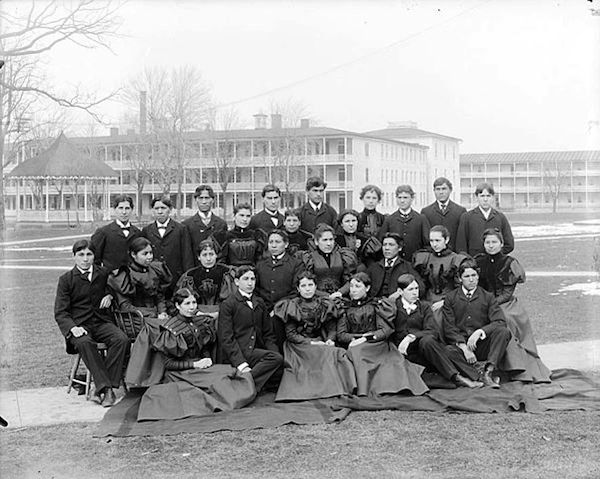
The dream is the reality—that land and sky are alive, that voices speak in and through them and that they wait for their gifts to be acknowledged, and respected.
In the past 40 years—the tiniest of all the slivers of time—a cultural, political and economic renaissance of the first peoples of the plains has gathered force. It faces an enormous and disheartening legacy of old and new obstacles: loss of land; loss of knowledge, language and culture; loss of autonomy, political initiative, forms of organization and economic opportunity; loss of people to malnutrition, disease, alcohol, suicide, and despair.
The people still suffer from neglect, hostility, and lies put forth by powerful governmental and economic interests. They suffer internal conflict, in part a consequence of enforced dependence; in part an effect of imposed band and tribal government structures.
But the renaissance gathers force nonetheless. Treaty and sovereign rights are being reasserted; space in public affairs is being reclaimed. Corporations and governments are bent to attention and negotiation. And traditions, histories, and cultural adaptations are being re-knit in new ways, in a recuperation of hundreds of generations. Sacred bundles, returned from museums, are once again unwrapped; their contents speaking to revitalized ceremonial societies (Dawn Walton, “Sacred bundles hold centuries of secrets,” The Globe and Mail (Toronto), July 29, 2009).
One glimmering star in this dawn sky was James Welch (1940-2003), of Montana Blackfeet, Gros Ventre, and Irish ancestry. The final stanza of his poem, “Dreaming Winter,” using the language and metaphors of settler cultures, evokes something enigmatic, doing so in sadness and irony, but also, I think, in hope. It reads as if about death, but it carries in its close-wrapped bundle of lines an intimation of awakening, or birth:
Have mercy on me, Lord. Really. If I should die
before I wake, take me to that place I just heard
banging in my ears. Don’t ask me. Let me join
the other kings, the ones who trade their knives
for a sack of keys. Let me open any door,
stand winter still and drown in a common dream.
(Montana Public Radio, “Monday Poems,” Monday, January 20, 2014, at http://mtpr.org/post/dreaming-winter)
This renaissance will not be a matter of mind only, but also of material things. Some of these will be big and robust: housing, roads, waterworks, schools, and yes, machinery. Others will be small, fragile, seemingly insignificant. Small things forgotten in storage rooms of museums are being reconsidered by curators and re-collected by the children of those who gave them up. From museums and archives as far away as Europe, they travel into the hands of their people, to be refolded into continuity and community by those who never forgot that they had once been taken.
In those hands, they tell stories old—and new—to those who respect their presence, and who listen.
In spring 2010, the Pitt Rivers Museum at the University of Oxford loaned five decorated deerskin Blackfoot shirts (collected in 1841) for exhibition at the Glenbow Museum and the Galt Museum and Archives, in Calgary and Lethbridge, Alberta, respectively. The project brought together members of Blackfoot/Blackfeet communities in Canada and the US, Canadian and British museum staff, and an international coterie of academics.
The shirts were originally designed to reflect their wearers’ accomplishments, but the right to wear them had to be earned. In the Lethbridge exhibit, modern uniforms were included, including graduation gowns, to suggest comparisons to contemporary culture (Galt Museum and Archives, Lethbridge, Alberta, “Kaahsinnooniksi Ao’toksisawooyawa: Our ancestors have come to visit: Blackfoot Shirts,” media backgrounder).
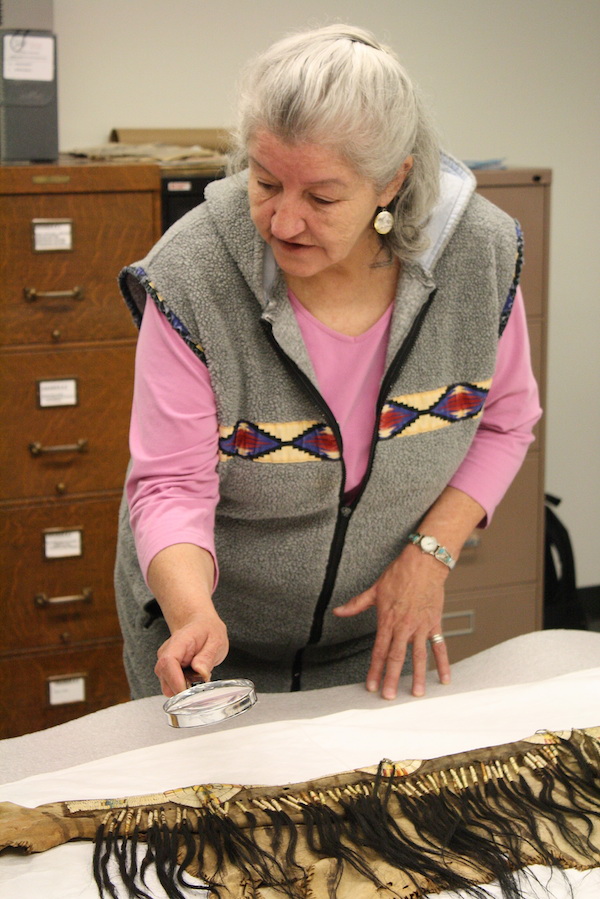
At a local high school, Blackfoot students learned skills needed to make contemporary versions of the shirts, perhaps for new honor ceremonies (Pitt-Rivers Museum, Oxford, “Reconnecting Indigenous Nations With Their Heritage”).
Despite the conservation risks involved, it was decided to give the Blackfoot people opportunities to come into the presence of the shirts, and to handle them physically. A Calgary high school student touched one gently and asked, “Am I one of the first Blackfoot to touch these in over a hundred years?” (Rosza Foundation, “Grantees,” http://www.rozsafoundation.org/grants/grantees).
A Pitt-Rivers staff member describes other responses: “Every time we uncovered a shirt, people of all ages gasped audibly at their beauty and power. Some chose to speak or to sing to the shirts: several men sang honor songs. Others brought gifts to honor the ancestors, or dressed in their best clothes. The discussion often moved into Blackfoot, and one elder said that other elders with him in a group were using Blackfoot words that he had not heard in a long, long time. Many women cried at the sight of the shirts, moved by both their beauty and by the fact they had never before had the chance to see such important heritage items. Many people wept as they left, genuinely sad that they might never again see these ancestors . . . .”
Alison Frank, a young college student said, after handling the shirts, “. . . [W]hen I first looked at them I almost had this, how do you say it, like a ball in your throat? It almost made me feel like I was going to cry. To experience that was almost like, you know, just getting it from the shirts. It was like I was going, reaching back into my past, my culture, and being able to do that, and coming from the background of not knowing very much about my culture, that’s one thing that really stood out to me. It really intrigued me to learn more, and to really actually appreciate what was in front of us.” (Pitt-Rivers Museum (Oxford), “Meeting the Ancestors: Learning from the Shirts” http://web.prm.ox.ac.uk/blackfootshirts/attachments/020_Meeting%20the%20Ancestors.pdf)
While birdsong and oil depart the grasslands, the ancient honor songs of plains people are heard there once more, in concert with new musical and political voices. Will they sing a common dream of recovery, reconsideration and reconciliation? Could they also help sing back the freedom of the buffalo, the sough of wind over land and water, and the interweaving chorus of grassland birds?

Note: The images illustrating this essay derive from the following sources: Photo 1: NASA, at http://earthobservatory.nasa.gov/NaturalHazards/view.php?id=79810; Photo 2: http://commons.wikimedia.org/wiki/File:Helmerich_%26_Payne_Flex_Rig_drilling_the_Bakken.jpg; Photo 3: http://commons.wikimedia.org/wiki/File:Writing_on_stone990.jpg; Photo 4: http://commons.wikimedia.org/wiki/File:Monk%27s_mound_panorama.jpg; Photo 5: Galt Museum & Archives, Lethbridge Alberta, by permission; Photo 6: Smithsonian Institution National Anthropological Archives, online at http://commons.wikimedia.org/wiki/File:Group_of_Male_and_Female_Students;_Brick_Dormitories_And_Bandstand_in_Background_1879.jpg; Image 7: Richard Amery, www.labeat.ca, by permission.
Acknowledgements & Further Reading: This column owes much to the generosity of colleagues in Native American Studies at the University of Lethbridge. Tarissa Spoonhunter, of the University of Arizona, and Donald McIntyre of the University of Lethbridge sensitized me to issues of sovereignty and identity in the renaissance of Native American legal thought. Shelley Stigter taught me about the pass system. And Barbara, said, “Don’t hate me,” and saved me from a massive sin of omission.
For discussions of the environmental impacts of oil and gas development on the Great Plains, see the following:
—“Potential impacts of oil and gas development on select North Dakota natural resources,” (Bismarck: North Dakota Game and Fish Department, May 2011), pages 77-83, at http://gf.nd.gov/sites/default/files/publications/specialty-publications/directors-report-oil-gas-may-2011.pdf
—World Wildlife Fund, Northern Great Plains Program, “Threats Assessment for the Northern Great Plains Ecoregion,” December 20, 2012, at http://www.npcn.net/documents/Threats_Assessment_NGP_Report_Dec2012.pdf;
—Nicholas Leingang, “We’re Fracked,” Part 1, High Plains Reader (Fargo, ND), 21:35, May 21, 2013, at http://hpr1.com/feature/article/were_fracked_part_1/
—National Geographic Education, Reference and News provides a basic primer on oil shales and their development, “Oil Shales,” at: http://education.nationalgeographic.com/education/encyclopedia/oil-shale/?ar_a=1#page=1).
On some of the dreams hopes and fears that Europeans have mapped on to the plains, see:
—John L. Allen, “New World Encounters: Exploring the Great Plains of North America,” Great Plains Quarterly 13.2 (1993): 69–80, at http://lewisandclarkjournals.unl.edu/read/?_xmlsrc=lc.allen.03&_xslsrc=LCstyles.xsl
—David Hackett Fischer, Champlain’s Dream (Simon & Scuster, 2008), reviewed at http://www.nytimes.com/2008/11/02/books/review/Boot-t.html?pagewanted=all&_r=0
On the culture, material life and social organization of the Blackfoot/Blackfeet Nations, see the many entries under “Our Culture,” Blackfoot Crossing Historical Park (Siksika, Alberta):
—http://www.blackfootcrossing.ca/exhibits.html
On the Métis and their legal and political recognition, see:
—Canada’s First Peoples, “The Métis: A New Canadian Nation,” at http://firstpeoplesofcanada.com/fp_metis/fp_metis1.html
—Parliament of Canada, “The Standing Senate Committee on Aboriginal Peoples, Evidence” (Ottawa, Canada, October 23, 2012), at http://www.parl.gc.ca/content/sen/committee/411%5CAPPA/49747-e.HTM
On record-keeping by the native peoples of the plains, see:
—Pekka Hämäläinen, Review of Colin G. Calloway, One Vast Winter Count: The Native American West before Lewis and Clark (Lincoln: University of Nebraska Press, 2003), at http://www.h-net.org/reviews/showrev.php?id=9100
—The Glenbow Museum (Calgary, Alberta), “Niitsitapiisini, Our Way of Life: The Story of the Blackfoot People,” at http://www.glenbow.org/blackfoot/en/html/index.htm ;
—Laura Behenna, “Rare Artifact Almost Went Out With Trash,” Canku Ota (Many Paths), Issue 27, January 13, 2001, at http://www.turtletrack.org/Issues01/Co01132001/CO_01132001_Buffalo_robe.htm
—The Smithsonian Institution (Washington, DC), “Lakota Winter Counts: an online exhibition,” at http://wintercounts.si.edu/html_version/html/
—Parks Canada, Áísínai’pi (Writing-On-Stone), at http://www.pc.gc.ca/eng/progs/spm-whs/page08/site01.aspx
On an Alberta example of a large stone circle, see:
—“Majorville Medicine Wheel,” Tsinikssini, 4:7, August 2012, pages 4-5, at http://newsletters.bloodtribe.org/2012/AUG2012.pdf
—Don Hill, “Old Big: Is southern Alberta home to Canada’s Stonehenge?” Alberta Views, July/August 2012, pages 42-46.
On the histories of conquest, displacement, labeling and the residential schools system, see:
—James Daschuk, Clearing the Plains: Disease, Politics of Starvation, and the Loss of Aboriginal Life:(University of Regina Press, 2013), http://www.uofrpress.ca/publications/Clearing-The-Plains
—Candace Savage, A Geography of Blood: Unearthing Memory from a Prairie Landscape (Greystone Books, 2012), http://www.greystonebooks.com/book_details.php?isbn_upc=9781553652342
—Thomas King, The Inconvenient Indian: A Curious Account of Native People in North America (Doubleday Canada, 2012), http://www.randomhouse.ca/books/93028/the-inconvenient-indian-by-thomas-king
— “A history of residential schools in Canada,” CBC News, May 16, 2008, at http://www.cbc.ca/news/canada/a-history-of-residential-schools-in-canada-1.702280
—“Aboriginal nutritional experiments had Ottawa’s approval: Experiments carried out on malnourished children in 40s and 50s, documents show,” CBC News, July 30, 2013, at http://www.cbc.ca/news/canada/thunder-bay/aboriginal-nutritional-experiments-had-ottawa-s-approval-1.1404390
On the thwarting of Blackfoot success in agriculture in the early 20th century, see Rebecca B. Bateman, “Talking With the Plow: Agricultural Policy and Indian Farming in the Canadian and US Prairies,” The Canadian Journal of Native Studies, XVI, 2(1996):211-228, at http://www3.brandonu.ca/library/cjns/16.2/bateman.pdf
On the role of “small things re-collected” in the cultural renaissance of first peoples, see:
—Pitt Rivers Museum, Oxford, Kaahsinnooniksi Aơtoksisawooyawa: Reconnections with historic Blackfoot shirts, “About the shirts”, at http://web.prm.ox.ac.uk/blackfootshirts/index.php/about-the-shirts/index.html, and at http://web.prm.ox.ac.uk/blackfootshirts/index.php/about-the-shirts/20-meeting-the-ancestors/index.html
—Blackfood Digital Library, Blackfoot Shirts Project, Interview with Adrienne Heavy Head, August 10, 2010, at http://blackfootdigitallibrary.com/files/media/936/media_document/adrienneheavyheadwarshirtsinterview.pdf
—Blackfoot Digital Library, Allen and Charlene Pard interview regarding the Blackfoot Shirts Project, at http://blackfootdigitallibrary.com/en/asset/allen-and-charlene-pard-interview-regarding-blackfoot-shirts-project
—“British Museum Visit,” Blackfoot Digital Library, at http://blackfootdigitallibrary.com/en/asset/british-museum-visit
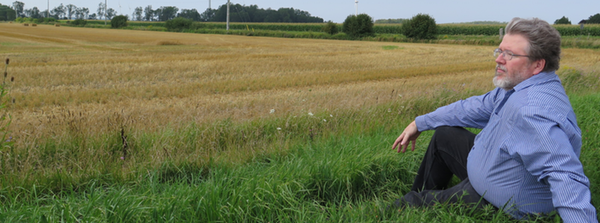
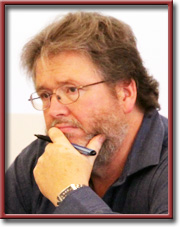
3 Comments
Will Balk
Well! This certainly piques my wildly-scattered interest…now I have a several-essays-long commitment to myself to be alert for the additional contributions coming from William Ramp. I can’t wait – although it’s best if I do…there’s a heck of a lot to glean here, and more to look up. Thank you!
William Ramp
Thanks, Ted! Sparking interest is what this series of columns is all about — they are suggestive rather than definitive, and I’d love nothing more than to have them inspire others not just to follow my journey, but to explore on their own.
The next column will address the clash and intermingling of ideas, dreams and people in the period of colonization and settlement — the imposition, sufferance and subversion of grids and descriptions, plans and projects.
Following that, I’ll resurrect one of the many political and social movements, utopian and otherwise, to come out of the plains.
And finally, I’ll return to questions that are at once ethical, political and spiritual: how do we now inhabit the plains, and how do they inhabit us?
William Ramp
A few additional links that might be of interest to some readers:
The Galt Museum and Archives, in Lethbridge, Alberta, has online, clickable photos of the honor shirts I mention in the column, along with close-up details. See http://www.galtmuseum.com/exhibits-blackfootshirts.htm
I would recommend a stop at the Galt — and also the nearby Head-Smashed-in Buffalo Jump World Heritage Site, and the Áísínai’pi National Historic Site — to anyone visiting Southern Alberta.
The Guardian has just published a fascinating article on the Bakken oil rush. See http://www.theguardian.com/cities/2014/jul/28/-sp-welcome-williston-north-dakota-america-new-gold-rush-city?CMP=fb_gu
And for an unforgettable photo-essay on life and work in the Bakken, see http://www.theguardian.com/cities/2014/jul/28/-sp-williston-north-dakota-people-oil-workers-photography-in-pictures?CMP=fb_gu
Finally … from honor to shame. Yesterday (July 27), a traditional First Nations shaming and challenge ceremony was held in Ottawa, in front of the Canadian Houses of Parliament. See http://www.cbc.ca/news/aboriginal/copper-broken-on-parliament-hill-in-first-nations-shaming-ceremony-1.2719175